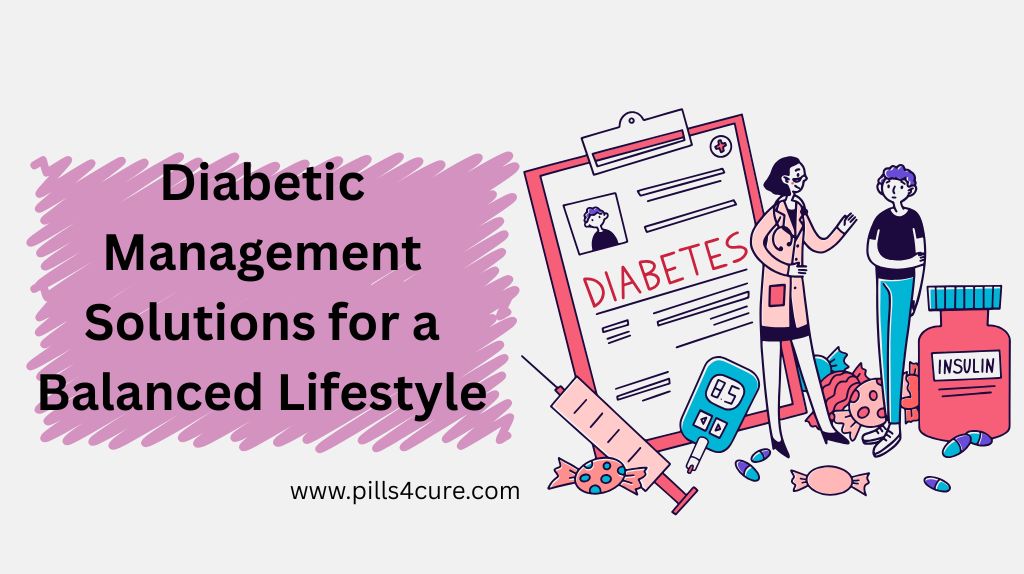Living with uncertainty about your health can be overwhelming, especially when dealing with conditions like type 2 diabetes. This comprehensive guide will help you understand the key warning signs, major risk factors, and essential steps to take if you suspect you may have this common metabolic disorder.
Type 2 diabetes impacts millions of people across the United Kingdom, yet many individuals remain undiagnosed for years. Understanding the diabetic type 2 meaning and recognizing early symptoms are crucial for timely intervention and effective management. With proper awareness, you can prevent long-term complications and take control of your health.
This detailed checklist will guide you through everything you need to know from spotting early signs to exploring treatment options such as Rybelsus 14 mg, one of the latest oral diabetes medications available through the NHS.
What Is Type 2 Diabetes? Understanding the Basics
Diabetic Type 2 Meaning
Type 2 diabetes is a chronic metabolic disorder characterised by high blood glucose levels resulting from insulin resistance or insufficient insulin production. Unlike type 1 diabetes, which is an autoimmune condition, type 2 develops gradually and is strongly linked to lifestyle factors.
In simple terms, your body either doesn’t produce enough insulin or can’t use it effectively. Insulin is the hormone responsible for helping glucose enter your cells to be used for energy. When this process fails, glucose accumulates in your bloodstream, leading to elevated blood sugar levels that can damage organs and tissues over time.
How Common Is It in the UK?
According to Diabetes UK, approximately 4.3 million people in the United Kingdom are living with diabetes, with type 2 diabetes accounting for roughly 90% of all cases. Alarmingly, an estimated 850,000 people have the condition but haven’t been diagnosed yet.
The Type 2 Diabetes Checklist: Signs and Symptoms
Early Signs of Type 2 Diabetes
The symptoms of type 2 diabetes often develop slowly, which is why many people don’t realise they have it. Here are the key warning signs to watch for:
Increased Thirst and Frequent Urination
When excess glucose builds up in your bloodstream, your kidneys work overtime to filter it out. This leads to increased urination, which in turn causes dehydration and persistent thirst.
Unexplained Fatigue
Feeling constantly tired, even after adequate rest, is one of the most common signs of type 2 diabetes. Without proper glucose uptake, your cells are starved of energy.
Blurred Vision
High blood sugar levels can cause the lens of your eye to swell, leading to temporary vision changes and blurriness.
Slow Healing Wounds
Cuts, bruises, and infections that take longer than usual to heal may indicate poor blood circulation and reduced immune function associated with diabetes.
Tingling or Numbness
Nerve damage (neuropathy) can cause tingling, numbness, or pain in your hands and feet—a condition known as diabetic neuropathy.
Additional Symptoms of Type 2 Diabetes
- Increased hunger, even after eating
- Unintended weight loss or gain
- Darkened skin patches (acanthosis nigricans), particularly around the neck and armpits
- Recurrent infections, especially urinary tract infections or thrush
- Irritability and mood changes
Risk Factors: Are You at Higher Risk?
Etiology of Type 2 Diabetes
Understanding the etiology of type 2 diabetes—the factors that contribute to its development—can help you assess your personal risk. The condition results from a complex interplay of genetic, environmental, and lifestyle factors.
Key Risk Factors Include:
- Age: Risk increases significantly after age 40, though younger people are increasingly being diagnosed
- Family History: Having a parent or sibling with type 2 diabetes doubles your risk
- Ethnicity: People of African Caribbean, Black African, Chinese, or South Asian descent face higher risk
- Obesity: Excess body weight, particularly around the abdomen, is the strongest modifiable risk factor
- Sedentary Lifestyle: Physical inactivity contributes significantly to insulin resistance
- Previous Gestational Diabetes: Women who had diabetes during pregnancy are at increased risk
- Polycystic Ovary Syndrome (PCOS): This hormonal disorder increases diabetes risk
- High Blood Pressure: Hypertension often accompanies insulin resistance
- Prediabetes: Elevated blood glucose levels that aren’t yet in the diabetic range
When Should You Get Tested?
NHS Diabetes Screening Guidelines
If you’re over 40 (or over 25 for those from higher-risk ethnic groups), you should request a diabetes check during your NHS Health Check. However, don’t wait for a routine appointment if you’re experiencing symptoms.
Get tested immediately if you have:
- Multiple symptoms from the checklist above
- A combination of risk factors
- A family history of diabetes and new symptoms
- Concerns about your blood glucose levels
What Tests Are Available?
HbA1c Test
This blood test measures your average blood glucose levels over the past 2-3 months. An HbA1c of 48 mmol/mol (6.5%) or higher indicates diabetes.
Fasting Plasma Glucose Test
After fasting for at least 8 hours, a blood glucose reading of 7.0 mmol/L or higher suggests diabetes.
Random Plasma Glucose Test
A reading of 11.1 mmol/L or higher at any time of day may indicate diabetes, especially if accompanied by symptoms.
What Is Type 2 Diabetes and How Is It Treated?
First Line Treatment Options
The good news is that type 2 diabetes can be effectively managed, and in some cases, even put into remission. Treatment focuses on controlling blood glucose levels to prevent complications.
Lifestyle Modifications: The Foundation
Adjust Your Diet
Nutrition plays a crucial role in managing type 2 diabetes. Working with a dietitian to adjust your diet can help improve blood sugar levels dramatically. Focus on:
- Reducing refined carbohydrates and sugary foods
- Increasing fibre intake through vegetables, whole grains, and pulses
- Choosing lean proteins and healthy fats
- Controlling portion sizes
- Eating regular, balanced meals
Physical Activity
Regular exercise is one of the most effective ways to lower blood sugar naturally. Aim for at least 150 minutes of moderate-intensity activity weekly, such as brisk walking, cycling, or swimming.
Weight Management
Even a modest weight loss of 5-10% can significantly improve blood sugar control and may reduce the need for medication.
Diabetes Medications: Medical Treatment Options
First-Line Medication Option
Metformin: The Gold Standard
Metformin is typically the first line option for treating type 2 diabetes. It works by reducing glucose production in the liver and improving insulin sensitivity. Most people tolerate it well, and it doesn’t cause hypoglycaemia (dangerously low blood sugar) when used alone.
Advanced Treatment Options
When lifestyle changes and metformin aren’t sufficient to treat type 2 diabetes by regulating blood sugar levels, your healthcare provider may recommend additional diabetes medications.
GLP-1 Agonists: A Breakthrough Treatment
Understanding GLP-1 Therapy
GLP-1 agonists represent a significant advancement in diabetes treatment. These medications mimic a natural hormone that helps regulate blood sugar by:
- Stimulating insulin production when blood glucose is elevated
- Slowing gastric emptying to prevent post-meal glucose spikes
- Reducing appetite and promoting weight loss
- Lowering blood sugar effectively
Rybelsus 14mg: An Oral Option
Rybelsus (semaglutide) is a notable GLP-1 agonist manufactured by Novo Nordisk. Unlike most GLP-1 medications that require injection, Rybelsus is taken orally, making it more convenient for many patients.
Rybelsus 14mg is typically prescribed after starting with lower doses (3mg or 7mg) to minimise side effects. It’s particularly beneficial for patients who need help with both blood glucose control and weight management.
Other Diabetes Medications
SGLT2 Inhibitors
These medications help your kidneys remove excess glucose through urine while also offering cardiovascular and kidney protection.
Sulphonylureas
These stimulate the pancreas to produce more insulin but carry a risk of hypoglycaemia and weight gain.
DPP-4 Inhibitors
These help prolong the action of natural hormones that lower blood sugar after meals.
Insulin Therapy
When other treatments aren’t sufficient, insulin injections may be necessary to achieve target blood glucose levels.
Improve Blood Sugar (Glucose): Practical Strategies
Daily Habits for Better Control
Monitor Your Levels
Regular blood glucose monitoring helps you understand how food, activity, and medication affect your levels. Your healthcare team will advise on how often to test.
Stay Hydrated
Drinking plenty of water helps your kidneys flush out excess glucose and prevents dehydration.
Manage Stress
Chronic stress elevates cortisol, which can raise blood sugar. Practice stress-reduction techniques like meditation, yoga, or deep breathing.
Prioritise Sleep
Poor sleep disrupts hormones that regulate blood glucose. Aim for 7-9 hours of quality sleep nightly.
Avoid Smoking and Limit Alcohol
Both can interfere with blood sugar control and increase complication risks.
Precautions and Preventive Measures
Preventing Type 2 Diabetes
If you’re at risk but haven’t been diagnosed, taking action now can prevent or delay the onset of type 2 diabetes:
- Maintain a Healthy Weight: Even small amounts of weight loss can significantly reduce risk
- Exercise Regularly: Physical activity improves insulin sensitivity
- Eat a Balanced Diet: Focus on whole foods and limit processed items
- Get Regular Check-ups: Early detection allows for prompt intervention
- Know Your Family History: Understanding your genetic risk helps you take preventive action
Living Well with Type 2 Diabetes
Attend Regular Appointments
Your annual diabetes review should include checks of your feet, eyes, kidneys, blood pressure, and cholesterol levels.
Take Medications as Prescribed
Consistency is crucial for maintaining stable blood glucose levels and preventing complications.
Build a Support Network
Connect with diabetes support groups, either locally or online, to share experiences and coping strategies.
Educate Yourself
Participate in diabetes education programmes offered through your GP surgery or local hospital.
Complications: Why Early Detection Matters
Long-term Health Risks
Uncontrolled type 2 diabetes can lead to serious complications:
- Cardiovascular Disease: Heart attack and stroke risk increases significantly
- Kidney Disease: Diabetes is a leading cause of kidney failure
- Nerve Damage: Can lead to pain, numbness, and digestive issues
- Eye Damage: May result in vision loss or blindness
- Foot Problems: Poor circulation and nerve damage can lead to infections and, in severe cases, amputation
- Cognitive Decline: Increased risk of dementia and Alzheimer’s disease
The Good News
These complications are largely preventable with proper management. Maintaining good blood glucose control, attending regular check-ups, and following treatment recommendations dramatically reduces your risk.

Frequently Asked Questions (FAQs)
Can type 2 diabetes be reversed?
While type 2 diabetes is a chronic condition, some people achieve remission through significant lifestyle changes, particularly substantial weight loss. Remission means maintaining normal blood glucose levels without medication, but it requires ongoing commitment to healthy habits. However, you’ll always need monitoring as the condition can return.
How quickly do symptoms develop?
Type 2 diabetes typically develops gradually over several years. Many people have prediabetes for months or years before progressing to diabetes. Some individuals may not notice symptoms until complications arise, which is why screening is so important for those at risk.
What’s the difference between type 1 and type 2 diabetes?
Type 1 diabetes is an autoimmune condition where the body attacks insulin-producing cells, requiring lifelong insulin therapy. It usually develops in childhood or early adulthood. Type 2 diabetes is primarily related to insulin resistance and lifestyle factors, typically developing later in life, though increasingly affecting younger people.
Will I definitely need insulin if I have type 2 diabetes?
Not necessarily. Many people manage type 2 diabetes successfully with lifestyle changes and oral medications. However, because type 2 diabetes is progressive, some people eventually require insulin therapy to maintain target blood glucose levels. This doesn’t mean you’ve “failed”—it simply reflects the natural progression of the condition.
Can I still eat carbohydrates if I have type 2 diabetes?
Absolutely! Carbohydrates are an important part of a balanced diet. The key is choosing complex carbohydrates (whole grains, vegetables, pulses) over simple sugars, controlling portion sizes, and distributing carbohydrate intake throughout the day. A dietitian can help you develop a sustainable eating plan.
How often should I check my blood glucose?
This depends on your treatment plan. People taking insulin may need to test multiple times daily, while those managing diabetes through lifestyle changes alone might test less frequently. Your healthcare team will provide personalised guidance based on your individual circumstances.
Are newer medications like Rybelsus available on the NHS?
GLP-1 agonists, including Rybelsus, are available on the NHS, but prescribing criteria vary. NICE (National Institute for Health and Care Excellence) provides guidelines on when these medications should be offered. Your doctor will determine if you meet the criteria based on your HbA1c levels, BMI, and other factors.
Can type 2 diabetes affect mental health?
Yes, living with a chronic condition like diabetes can impact mental wellbeing. People with diabetes have an increased risk of depression and anxiety. It’s important to discuss any mental health concerns with your healthcare team, as psychological support is an essential part of diabetes care.
Is type 2 diabetes hereditary?
There’s definitely a genetic component, but lifestyle factors play an equally important role. If you have a family history of type 2 diabetes, you’re at higher risk, but maintaining a healthy weight, staying active, and eating well can significantly reduce that risk.
What should I do if I’m diagnosed with type 2 diabetes?
First, don’t panic. Type 2 diabetes is manageable with the right support and treatment. Schedule a comprehensive appointment with your GP to discuss treatment options, request referrals to specialists (dietitian, diabetes educator), join a diabetes education programme, and begin implementing lifestyle changes gradually. Remember, you’re not alone millions of people successfully manage this condition every day.


